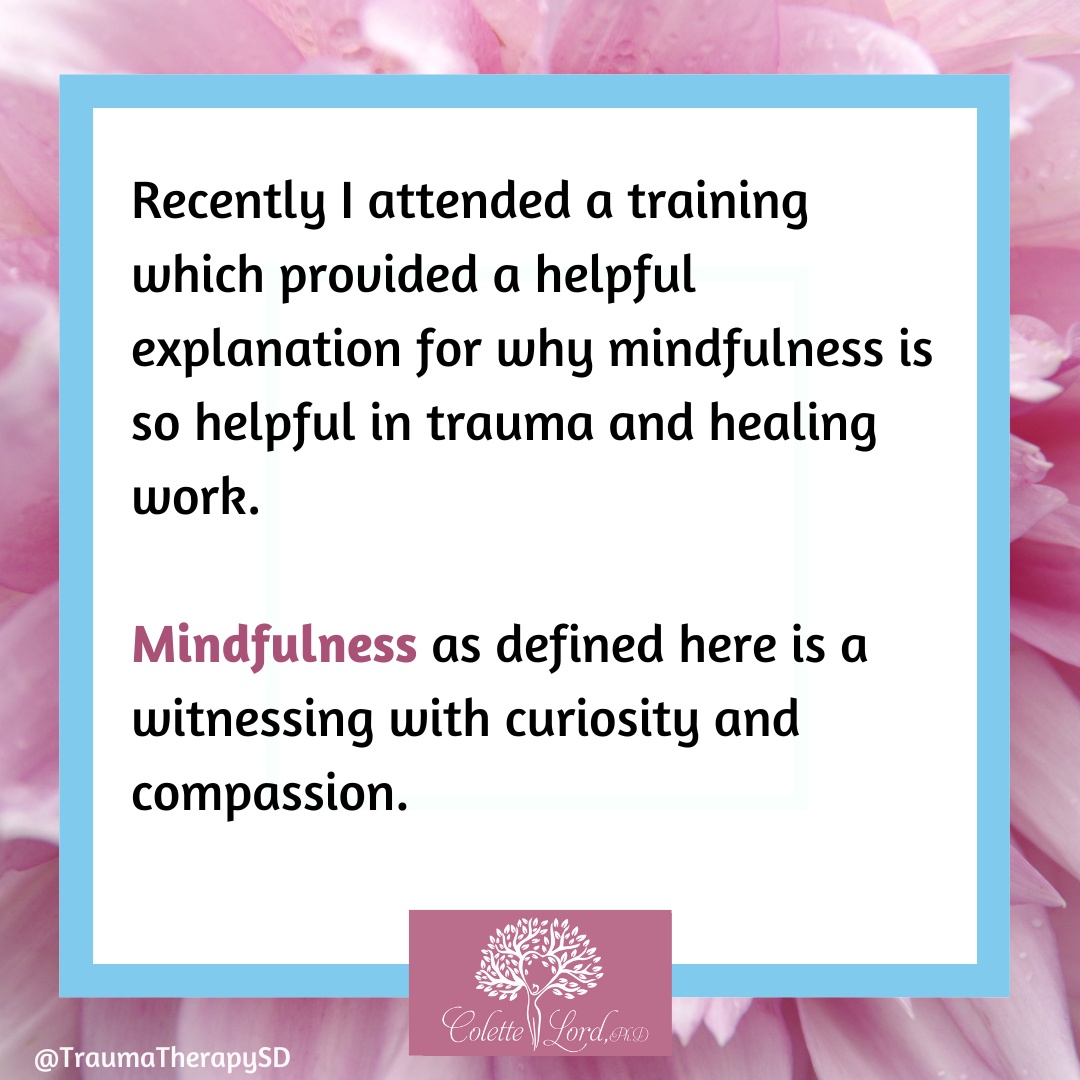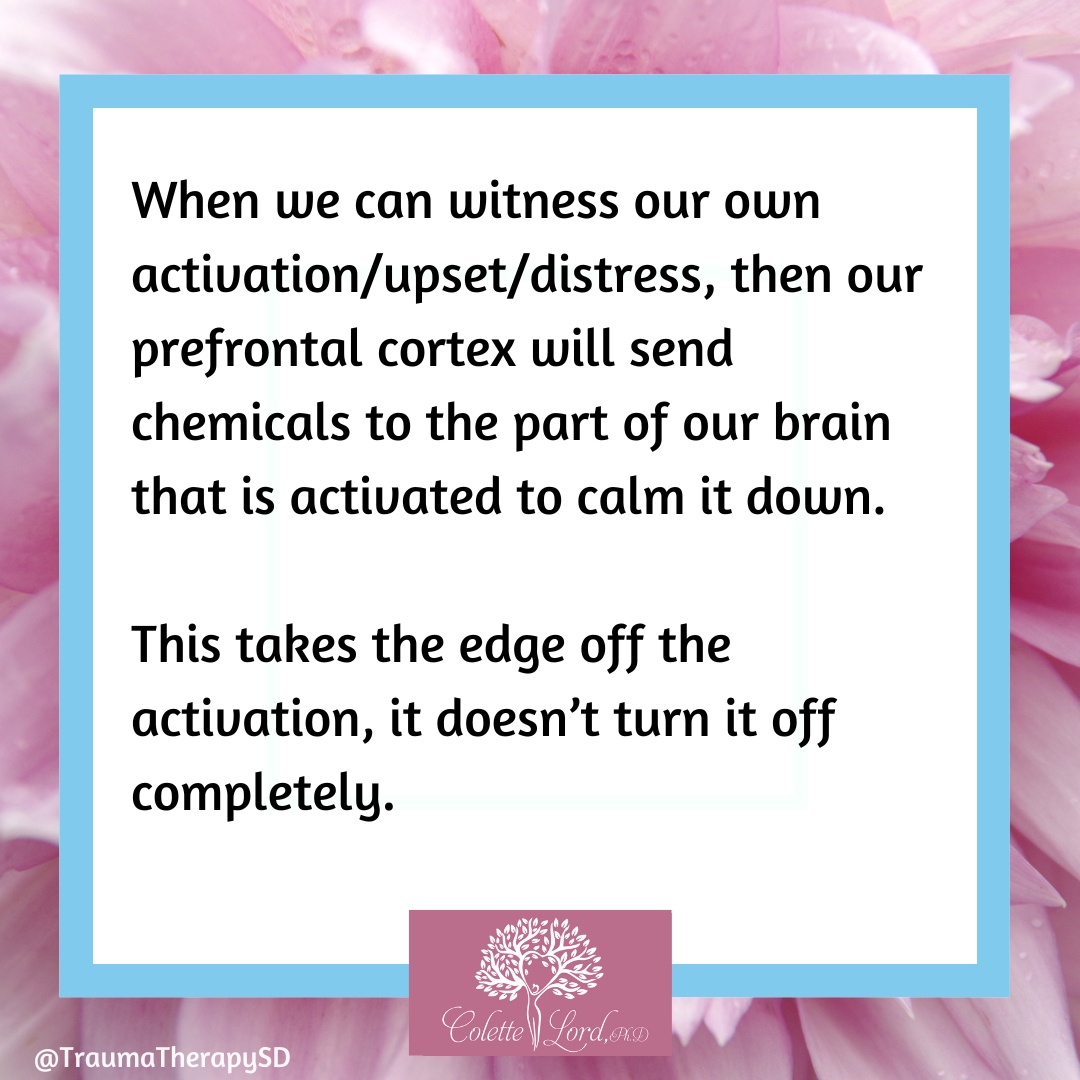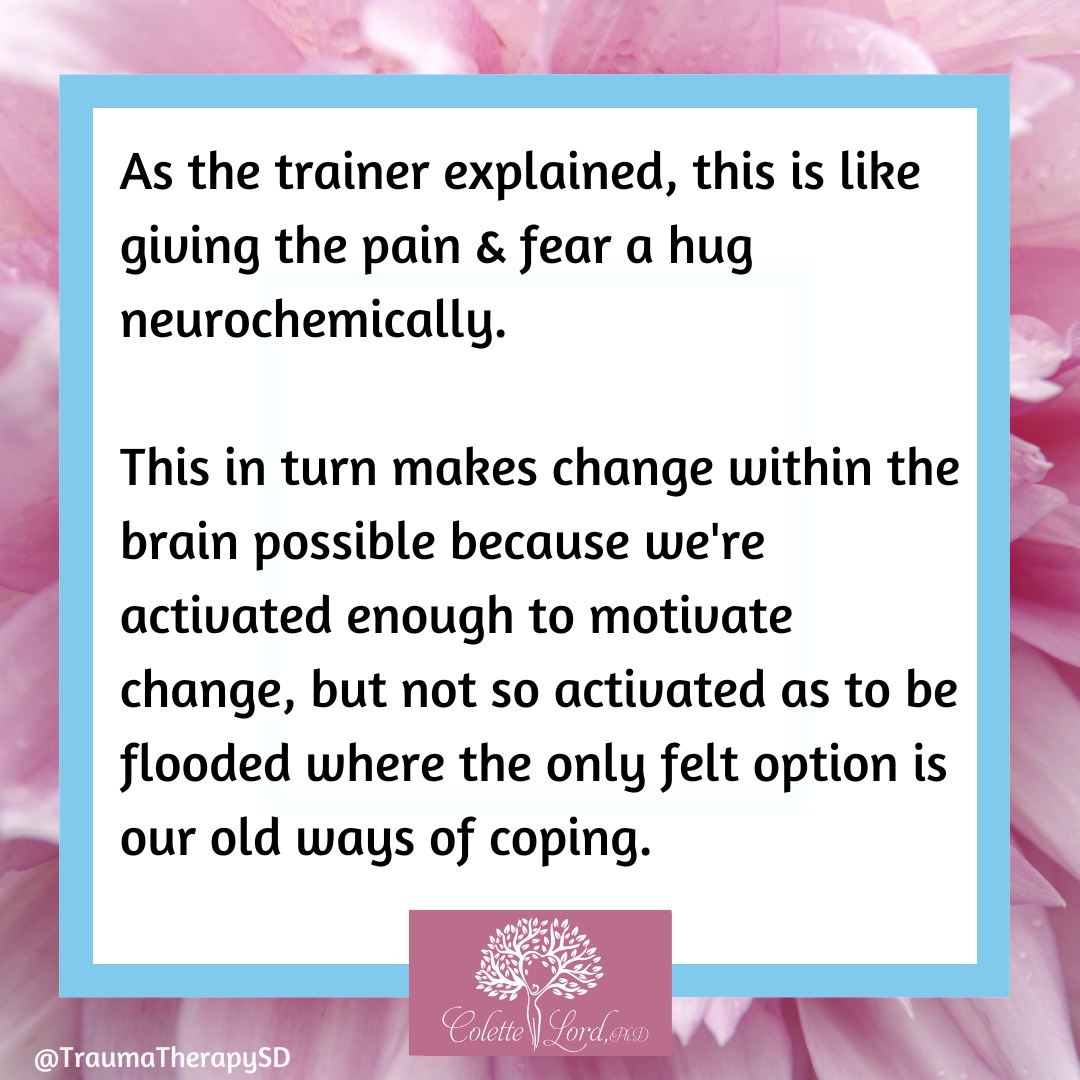Mindfulness & Healing
I’m taking a training called the Neurobiology of Parts Work presented by Juliane Taylor Shore, LFMT, LPC, SEP.
Parts work in therapy is a way of working with people in which we assume that each of us has different parts of self, of our minds, of our psyches. Each part of self has a pattern of thinking, feeling and behaving that differs to some degree from other parts of self.
For example, I have my psychologist part of self who puts together these posts, works with clients, attends trainings, etc. I also have the dog mom part of self who cares for my dogs, trains my therapy dog Sadie, and takes an obnoxious amount of photos of my dogs. The way these parts of me behave and think and feel are similar but different and are just two of my parts of self.
The more traumatized a person has been the more separate, distinct and individuated these parts may become until they are experienced as distinct individuals, which we see in Dissociative Identity Disorder and OSDD.
In Shore’s training she explains why the practice of mindfulness is so important in healing. Mindfulness as defined here is a witnessing with curiosity and compassion.
When we can witness our own activation/upset/distress, then our prefrontal cortex will send chemicals to the part of our brain that is activated to calm it down. This takes the edge off the activation, it doesn’t turn it off completely.
As Shore explains, in essence this is like giving the pain and fear a hug neurochemically. This in turn makes change within the brain possible because we are activated enough to motivate change, but not so activated as to be flooded where the only felt option is our old ways of coping.
This was a really understandable and relatable way of explaining mindfulness and healing, so I wanted to share.













